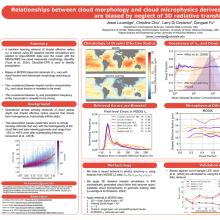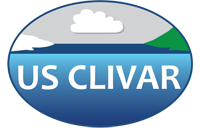Incorporating 3D radiative transfer in satellite remote sensing is crucial to obtain an accurate dependence of cloud microphysics on cloud macrophysics for studying aerosol-cloud interactions.
Jesse
Loveridge
Colorado State University
Poster
Satellite observations play a crucial role in studies aerosol-cloud interactions by providing information on cloud macrophysical and microphysical properties over the globe. The most widely used method for retrieving cloud optical depth and droplet effective radius from satellite measurements is a bi-spectral method utilized by instruments such as the MODerate resolution Imaging Spectroradiometer (MODIS). The bi-spectral method is known to have systematic retrieval errors due to neglect of 3D radiative transfer. The sign and the magnitude of these errors depend on mesoscale morphology, large-scale cloud fraction, and sun viewing geometry, which can lead to misinterpretation in aerosol-cloud interactions from satellite-based studies and thus, must be addressed.

Loveridge-Jesse-poster.pdf
(3.95 MB)
Meeting homepage
